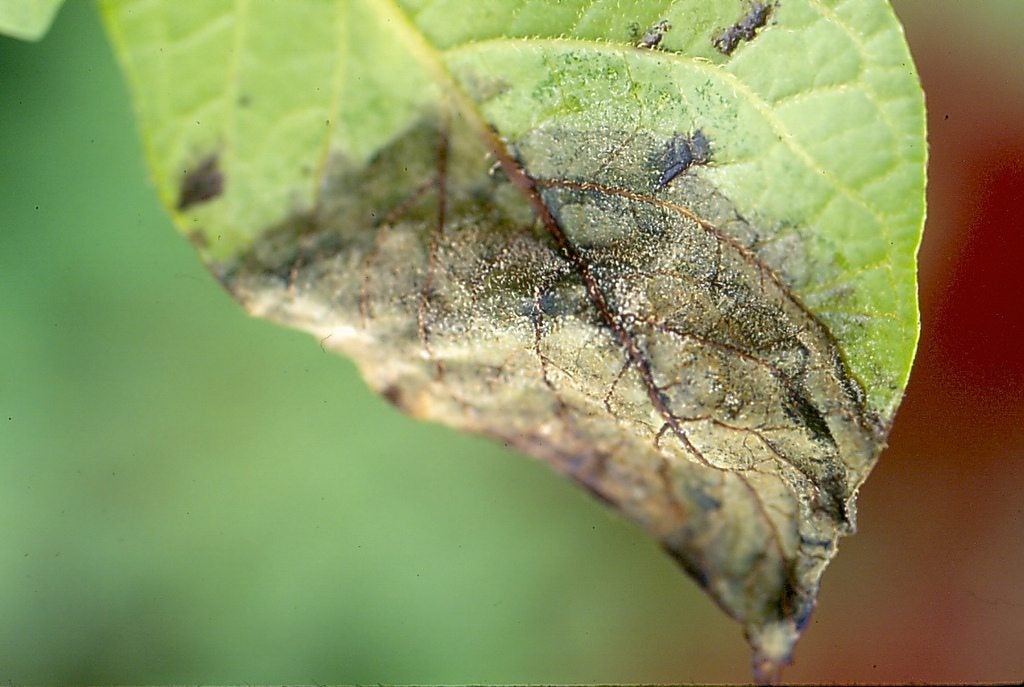What Is Potato Late Blight – How To Manage Potatoes With Late Blight

Even if you don’t realize it, you have probably heard of late blight of potatoes. What’s potato late blight – only one of the most historically devastating diseases of the 1800’s. You may know it better from the Irish potato famine of the 1840’s that resulted in the starvation of over a million people along with a mass exodus of those who survived. Potatoes with late blight are still considered to be a serious disease so it’s important for growers to learn about treating potato late blight in the garden.
What is Potato Late Blight?
Late blight of potatoes is caused by the pathogen Phytophthora infestans. Primarily a disease of potatoes and tomatoes, late blight may affect other members of the Solanaceae family as well. This fungal disease is fostered by periods of cool, wet weather. Infected plants may be killed off within a couple of weeks from infection.
Symptoms of Late Blight in Potatoes
Initial symptoms of late blight include purplish-brown lesions on the surface of the potatoes. When inspected further by cutting into the tuber, reddish-brown dry rot can be observed. Often, when the tubers are infected with late blight, they are left open to secondary bacterial infections which may make diagnosis difficult. The foliage of the plant will have dark water soaked lesions surrounded by white spore and the stems of infected plants will be afflicted with brown, greasy looking lesions. These lesions are usually at the juncture of the leaf and stem where water collects or on leaf clusters at the top of the stem.
Treating Potato Late Blight
Infected tubers are the primary source of the pathogen P. infestans, including those in storage, volunteers, and seed potatoes. It is transmitted to newly emerging plants to produce airborne spores which then transmit the disease to nearby plants. Use only certified disease free seed and resistant cultivars where possible. Even when resistant cultivars are used, an application of fungicide may be warranted. Remove and destroy volunteers as well as any potatoes that have been culled.
Gardening tips, videos, info and more delivered right to your inbox!
Sign up for the Gardening Know How newsletter today and receive a free copy of our e-book "How to Grow Delicious Tomatoes".

Amy Grant has been gardening for 30 years and writing for 15. A professional chef and caterer, Amy's area of expertise is culinary gardening.
-
 Looking For Plants To Give You The Soft And Fuzzies? Try These 5 Fuzzy Leaf Plant Options
Looking For Plants To Give You The Soft And Fuzzies? Try These 5 Fuzzy Leaf Plant OptionsLovers of texture, drama, silver foliage and tactile plants will adore these special sensory garden additions. These fuzzy leaf plant options will leave you all aglow
By Susan Albert
-
 Get Ready For A Summer Of Hummers! Grow These Full Sun Hummingbird Plants and Flowers
Get Ready For A Summer Of Hummers! Grow These Full Sun Hummingbird Plants and FlowersIf you’re lucky enough to enjoy a sunny backyard, make sure you are maxing out on your pollinator opportunities and grow these full sun hummingbird plants and flowers
By Tonya Barnett